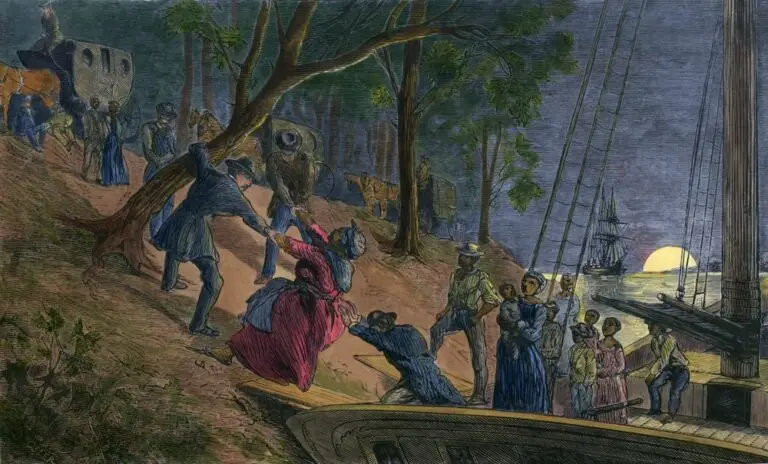Underground Railroad

Table of Contents
What was the Underground Railroad?
The Underground Railroad was a network of secret routes and safe houses established in the United States during the 19th century. It was used by African American slaves to escape to freedom in the Northern states and Canada.
The Underground Railroad operated covertly, with the assistance of abolitionists, free African Americans, and sympathetic individuals who opposed the institution of slavery.
Underground Railroad History
The Underground Railroad was a network of secret routes and safe houses used by African American slaves to escape to freedom in the Northern states and Canada during the 19th century.
The Underground Railroad operated from the late 18th century through the Civil War, with its peak activity in the decades leading up to the 1860s.
The term “Underground Railroad” is believed to have originated around 1831, but the network itself was not an actual railroad. It was a metaphorical term referring to the covert system of escape routes.
The network involved the collaboration of abolitionists, free African Americans, sympathetic whites, and religious groups who opposed slavery.
Harriet Tubman, born into slavery, became one of the most famous conductors of the Underground Railroad, making numerous trips back to the South to guide others to freedom.
Safe houses along the Underground Railroad were often called “stations,” and those who guided and aided fugitive slaves were known as “conductors.”
The Underground Railroad extended to various Northern states and even into Canada, where slavery was abolished earlier than in the United States.
Fugitive slaves traveled by night, often on foot, and hid during the day to avoid capture by slave catchers or authorities.
Abolitionist Quakers and other religious groups were active participants in the Underground Railroad, driven by their moral opposition to slavery.
The Fugitive Slave Act of 1850, which required the return of escaped slaves to their owners, increased the dangers faced by fugitives and those assisting them on the Underground Railroad.
Related Links
Abolitionism
Civil Rights Movement
Jim Crow Laws
Plessy v. Ferguson